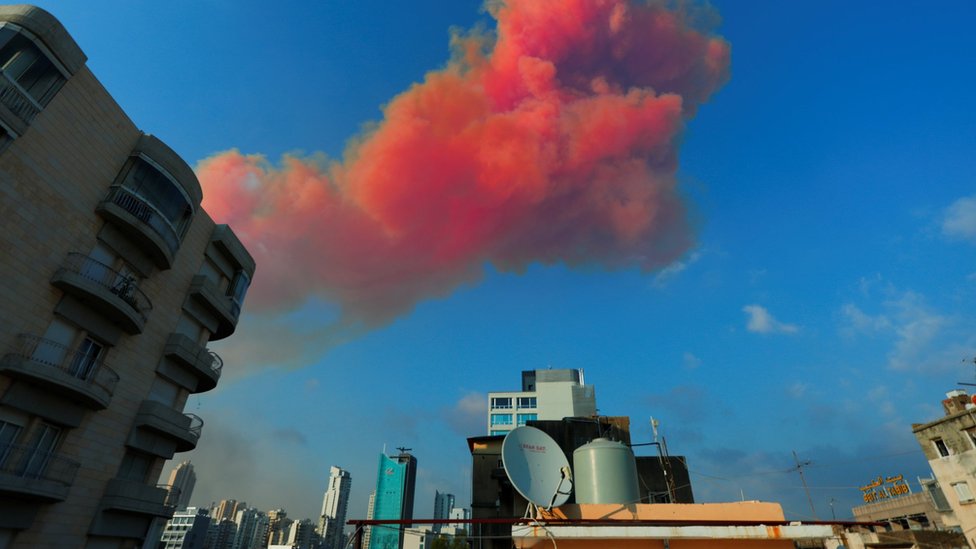

image copyrightReuters
Nearly 3,000 tonnes of ammonium nitrate – taken from a ship off the coast of Beirut six years ago and then stored in a warehouse – has been blamed for the explosion that ripped through the port area of the Lebanese capital on Tuesday.
But what is ammonium nitrate and why can it be so dangerous?
Ammonium nitrate is a crystal-like white solid which is made in large industrial quantities. Its biggest use is as a source of nitrogen for fertiliser, but it is also used to create explosions for mining.
“You won’t just find ammonium nitrate in the ground,” explains Andrea Sella, professor of chemistry at University College London. That’s because it’s synthetic, made by reacting ammonia with nitric acid, he says.
Ammonium nitrate is made all over the world and is relatively cheap to buy.
But storing it can be a problem, and it has been associated with serious industrial accidents in the past.
On its own, ammonium nitrate is relatively safe to handle, says Prof Sella.
However, if you have a large amount of material lying around for a long time it begins to decay.
“The real problem is that over time it will absorb little bits of moisture and it eventually turns into an enormous rock,” he says. This makes it more dangerous, he adds, because it means if there is a shock, it will spread much more easily.
The longer it is left, the more likely it will get contaminated with items such as fuel oil, former senior military intelligence officer Philip Ingram told BBC Radio 4’s Today programme.
Once that happens it can produce a reaction in the chemical. “It generates its own heat and, once it’s started, it continues to generate it and that will build up over time,” Mr Ingram says. “That could then lead to the high-order explosion that we saw in those horrific videos that came out of Beirut.”
Videos from Beirut showed smoke billowing from a fire, and then a mushroom cloud following the blast.
“You have a supersonic shockwave that is travelling through the air, and you can see that in the white spherical cloud which travels out from the centre, expanding upwards,” says Prof Sella.
The shockwave is produced from compressed air, he explains. “The air expands rapidly and cools suddenly and the water condenses, which causes the cloud,” he adds.
image copyrightReuters
When ammonium nitrate explodes, it can release toxic gases including nitrogen oxides and ammonia gas.
The orange plume is caused by the nitrogen dioxide, which is associated with air pollution.
“If there isn’t much wind, it could become a danger to the people nearby,” says Prof Sella.
Read MoreFeedzy
Want to bond over unexpected activities? Look at these unconventional ways to connect with your…
Burnout isn’t just something that happens to CEOs. For moms homeschooling littles, it’s a very…
When it comes to long-distance motorcycling, comfort, reliability, and smart engineering can make or break…
Flowers have seen significant transformation over time; online flower shopping is increasingly common now for…
Learn essential first-time landlord tips for success, from tenant screening to property maintenance. These strategies…
Every business will produce some form of waste. The real task isn’t preventing waste entirely—it’s…